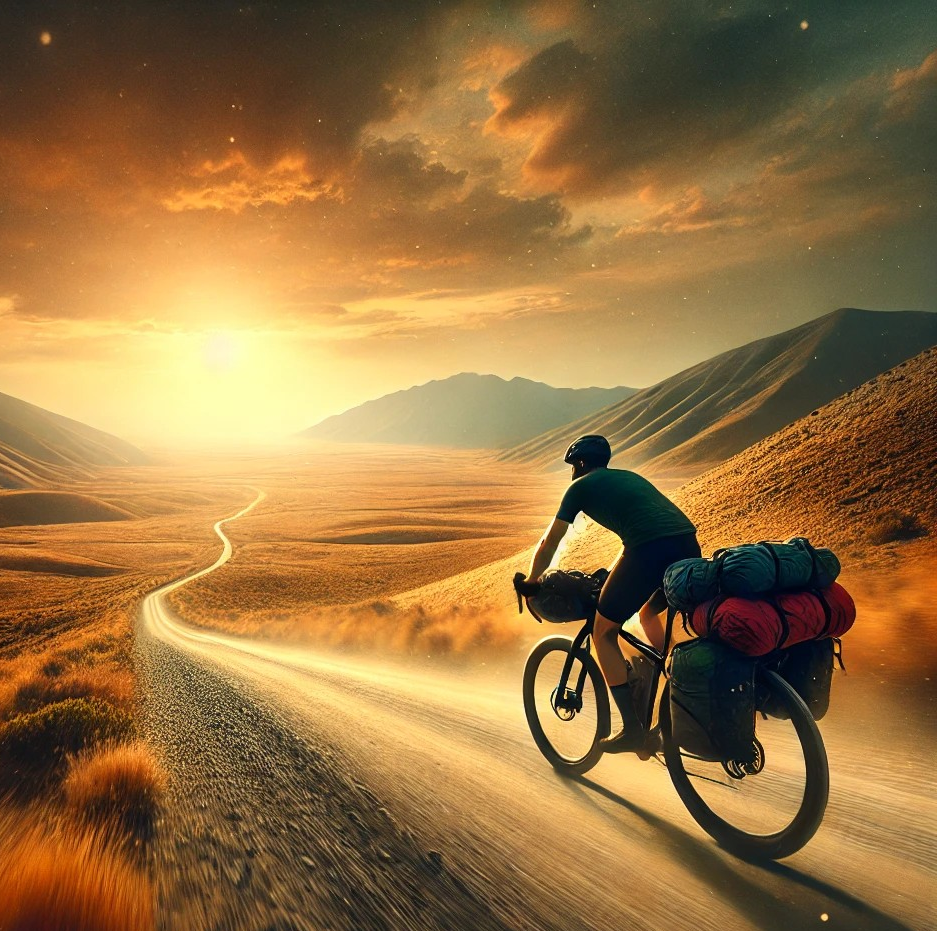
The Science of Bikepacking: How to Maximize Energy & Endurance on Long Rides
Share
🚴🔥 The Science of Bikepacking: How to Maximize Energy & Endurance on Long Rides
🔹 Introduction: Why Endurance Matters in Bikepacking
Long-distance bikepacking demands more than just strength—it requires strategic fueling, hydration, pacing, and recovery to sustain energy over days or even weeks. Whether you're riding through rugged terrain or pushing through extreme conditions, understanding the science of endurance can make or break your adventure.
In this guide, we’ll break down scientific, expert-backed strategies to keep your body performing at its best, covering:
✅ How to fuel efficiently for sustained energy.
✅ The importance of hydration & electrolyte balance.
✅ Smart pacing to avoid burnout.
✅ Recovery techniques that maximize endurance.
✅ The mental side of long-distance riding.
🚀 Let’s dive in and unlock the secrets of endurance bikepacking!
🥑 Part 1: Energy Management – How to Fuel for Long-Distance Rides
Understanding Energy Systems: Fat vs. Glycogen
Your body relies on two main energy sources:
🔹 Glycogen (Carbs) – Fast-burning, high-power fuel (great for sprints and climbs).
🔹 Fat (Slow-burning Energy) – More sustainable, ideal for long rides at moderate effort.
How to Balance Carbs & Fats for Maximum Endurance:
- Before the ride: Eat complex carbs + healthy fats (oats, nut butter, whole grains).
- During the ride: Snack every 45-60 minutes to avoid energy crashes.
- After the ride: Refuel with protein + carbs to rebuild muscle and replenish glycogen.
🚴 Pro Tip: Why “eat before you're hungry” is the golden rule of endurance riding.
💧 Part 2: Hydration & Electrolyte Balance – Why It’s Critical
The Role of Electrolytes in Endurance
Electrolytes (Sodium, Potassium, Magnesium) are essential for:
✅ Muscle function (prevents cramps).
✅ Hydration balance (prevents dehydration).
✅ Nerve function (keeps reaction time sharp).
How Much Water Do You Really Need?
- Cold weather: 500ml–1L per hour.
- Hot weather: 750ml–1.5L per hour.
- High-intensity riding: Increase fluid intake & electrolytes.
🚴 Pro Tip: Why “drink before you're thirsty” is key to avoiding performance drops.
⚡ Part 3: Pacing Strategies – Ride Smarter, Not Harder
The Power of Zone 2 Training (Why Slow = Fast in Endurance)
Zone 2 heart rate (60-70% max) allows you to:
✅ Burn fat efficiently (preserves glycogen).
✅ Ride longer with less fatigue.
✅ Recover faster after long days on the bike.
Smart Climbing & Descending Strategies
🔹 Climbing: Use a high cadence (80-90 RPM) to reduce muscle fatigue.
🔹 Descending: Keep pedaling lightly to flush lactic acid from your legs.
🚴 Pro Tip: Why “start slow to finish strong” is the key to multi-day endurance.
🛌 Part 4: Recovery – The Secret Weapon of Endurance
Why Sleep is the #1 Performance Enhancer
- Deep sleep = muscle repair (rebuilds strength overnight).
- Improves endurance & reaction time.
- Reduces inflammation & soreness.
Post-Ride Recovery Tips
✅ Stretch for 5-10 minutes to prevent stiffness.
✅ Use compression gear to reduce swelling.
✅ Cold water immersion (if available) to accelerate recovery.
🚴 Pro Tip: Why taking care of your body is just as important as your gear.
🧠 Part 5: Mental Endurance – The Key to Pushing Through
How to Break Through “The Wall”
- Micro-goals: Focus on one milestone at a time (next mile, next rest stop).
- Visualization: Picture how good it’ll feel to complete your ride.
- Positive self-talk: Swap “I can’t do this” for “I’ve trained for this.”
🚴 Pro Tip: Why mental strength matters just as much as physical preparation.
🎯 Final Thoughts & Call-To-Action
🚴 “Endurance bikepacking is about mastering your body AND your mind. With the right fueling, hydration, pacing, and recovery strategies, you’ll ride stronger and further than ever before.”
🔹 Try these tips on your next ride & see what works for you!
🔹 Got your own endurance hack? Drop it in the comments below!
🔥 Want to upgrade your gear for long-haul endurance?